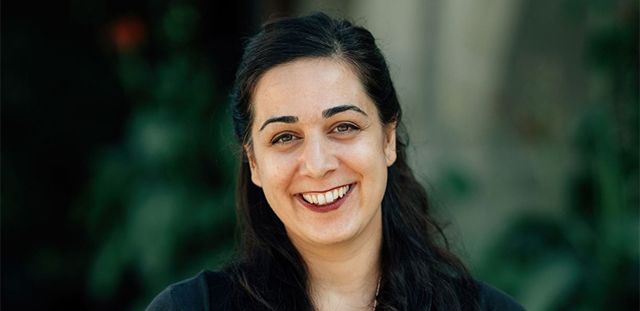Many parents lose sleep making sure their kids get regular and quality shuteye. While their own sleep is equally important, they are right to make it a priority! Experts know that kids who regularly get enough sleep have improved attention, behavior, learning, memory, and overall better mental and physical health.
Researchers have found genes can have a strong influence on how well teenagers sleep. These findings suggest that adolescents can be genetically predisposed to poor outcomes. As low quality and insufficient sleep are associated with poor mental health, researchers are throwing back the covers to find out more.
One important sleep researcher in the Jacobs Network is Cognitive Neuroscientist Leila Tarokh. Leila does research to get a better understanding of how different bodily functions contribute to sleep, especially for people with a psychiatric disorder that changes how sleep is experienced in the brain. Better understandings lead to better therapies.
Thanks to a Jacobs Foundation grant, Leila set out to study the heritability of adolescent sleep patterns. Her focus is on “high-density waking and sleep EEG”, which uses sensors placed on the scalp to track electrical activity in the brain while people sleep. Leila is currently examining sleep in adolescents with major depressive disorders. She is a group leader at the University Hospital of Child and Adolescent Psychiatry and Psychotherapy at the University of Bern in Switzerland.
Same But Different: Identical Twins Show Distinct Patterns of Brain Connectivity
Identical twins share nearly all of their genetic material and, because they grow up together, they usually share the same familial and social environment. But even with all this in common, they do not have the same brain patterns when they sleep. Researchers like Leila are interested in working with twins because it seems that even minor differences in your environment early in life can become significant later. And we can see this in the brain.
We asked Leila some questions about her work.
What led you to begin researching brain development in twins?
I became fascinated with how variable sleep patterns and brain activity are during sleep in individuals while working as a postdoc with Mary Carskadon, one of the USA’s prominent sleep researchers and we started putting the pieces of the puzzle together. We found some measures of brain activity during sleep were correlated with changes in cognitive function. We also found there are large individual differences and that these might reflect important aspects of brain function.
One way to understand why these differences exist is to study twins. Twin studies are sometimes called nature’s experiment because identical twins share almost all their genes.
What has been an especially exciting result of your work on sleep and the brain?
We were really surprised to see how both genetic and environmental factors can shape the brain, depending on what is being measured and where in the brain. This means that we see the impact of “nature” and “nurture” on sleep and this goes to the core of understanding who we are.
How has being in the Jacobs Network affected your work or been helpful in your research?
I am forever grateful to the Jacobs Foundation for giving me the opportunity to answer what had become a really burning question for me. Not only did the funding for the twin study allow me to answer this question, but it opened up further opportunities to establish myself as an independent researcher.
Can you share with us the next steps in your research, what application would you like to see it used for?
Many patients with psychiatric disorders suffer from sleep problems and such disorders have their onset during adolescence. If we can find a way to use sleep EEG to see which adolescents will be most vulnerable to developing a psychiatric disorder, we can intervene early to shape the course of development for the better. In current projects we are recording sleep EEG in a large sample of adolescents and following them over time to see which ones develop mental health problems.
